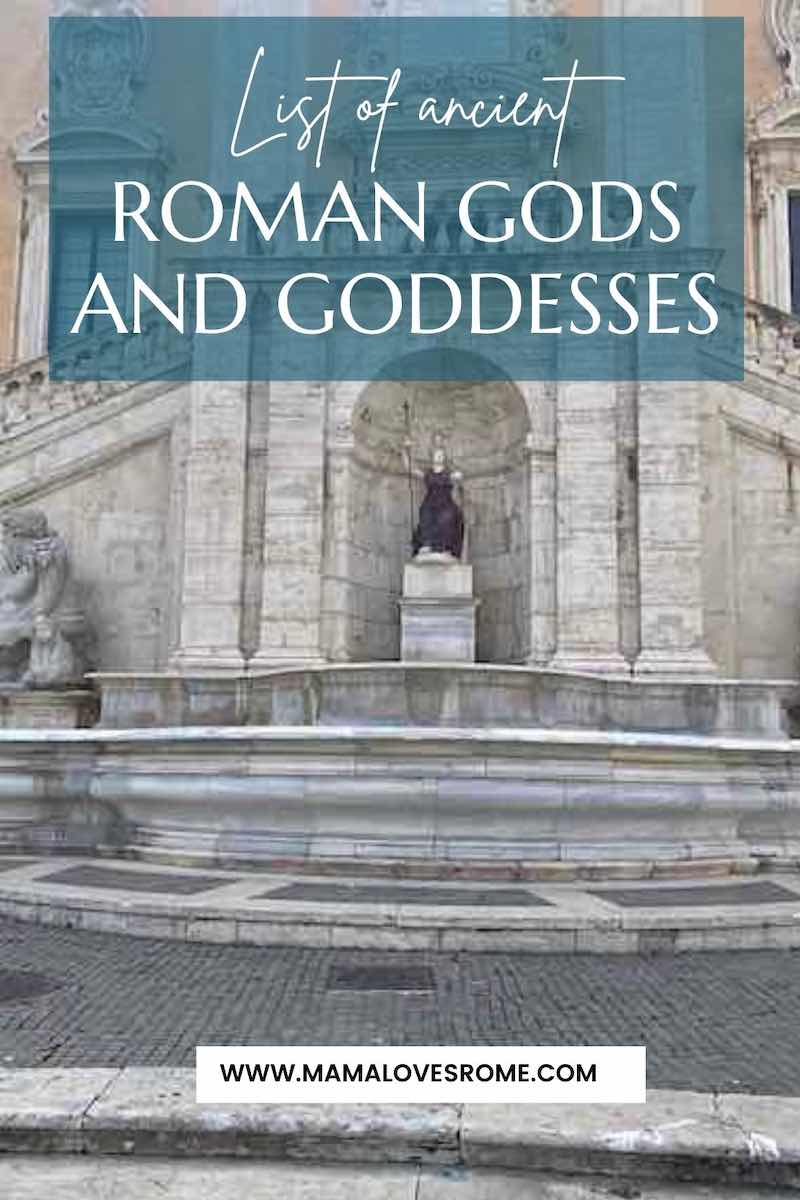Essential guide to the main Roman Gods: their names, symbols and festivities. Guide to Roman Gods for kids, students and curious visitors.
The ancient Romans worshipped a large number of Gods and Goddesses.
Some of them were the Roman equivalent to Greek Gods, others came from ancient Italic tribes and were specific to Rome and others were gods and goddesses Rome started worshipping after its expansion to faraway lands, mostly Egypt and the Middle East.
The best known of all Rome Gods and Goddesses are the 12 deities Rome shared with Greek mythology however, they were not the only ones.
Gods such as Mithra and Goddesses such as Isis also had a strong following in Rome.
This is a list of the most important Gods and Goddesses from ancient Rome, their symbols and meaning.
Fun fact: each Roman God and Goddess had temples of places of worship. One place however was devoted to them all: the Rome Pantheon built, as the name suggests for all the Gods (Pan=all; Theon=Gods, in Greek).
List of main Roman Gods and Goddesses
| Name of ancient Roman God/Goddess | Goddess/God of | Symbol |
| Jupiter (Latin: Iippiter, Iovis) | God of light, God of storms and weather events | Eagle, lighting |
| Juno | Goddess of light, protector of birth | Cow, peacock |
| Mars | Roman God of war and agricultural prosperity | Wolf, woodpecker, horses |
| Venus | Goddess of beauty and love | Myrtle, rose, apple tree, poppy flower. Often represented coming out of water |
| Minerva | Goddess of knowledge and war | Represented in full armor and with an owl, like Greek Athena |
| Apollo | God of sun, prosperity and victory | His symbol was the laurel |
| Diana | Goddess of wilderness, nature and hunting | Represented with bow and arrows |
| Mercurio | Roman god of trade and commerce | Winged shoes |
| Vulcano | God of fire and metallurgic world | Represented as a man busy with metallurgic work |
| Vesta | Goddess of family and household | Represented as a mature woman with a sceptre |
| Mitra | Asian and then Roman God of the light, sun and agriculture | Represented as a man slaying a bull with ears of corn sprouting from it |
| Quirinus | The ancient God of Rome, associated with Romulus | Often represented as a bearded young man, his symbol seems to have been the plant of the myrtle |
| Lares and Penates | Gods of family and household | Often represented as a beautiful youth |
| Janus | God of beginnings and endings, of doors and change | A head with two faces looking opposite ways |
| Ceres | Goddess of agriculture | Ears of corn |
| Pluto | God of the underworld and of wealth | His symbols were the 3 headed dog Cerberus and the snake |
| Saturno | God of agriculture | His symbol was the sickle |
| Neptune | God of the sea | Horses, A muscular man with a trident |
| Bacchus | Wine, horticulture, ambiguity and theater | Grapes, vines |
| Asclepius | Medicine, health, renewal | A snake wrapped around a rod |
| Fauno | Roman God of wild nature | Represented with goat hooves |
| Isis | Egyptian Goddess of fertility and magic | Represented as a hawk or as a woman with eagle eyes |
Roman Gods and Goddesses
Jupiter (Iuppiter, Jovis in Latin) – Roman God of the sky and weather events
Jupiter (Iuppiter in Latin) was the God above all other Gods in Rome.
Equivalent to the Greek God Zeus, he was represented as King of the other Gods, several of which were described as his children.
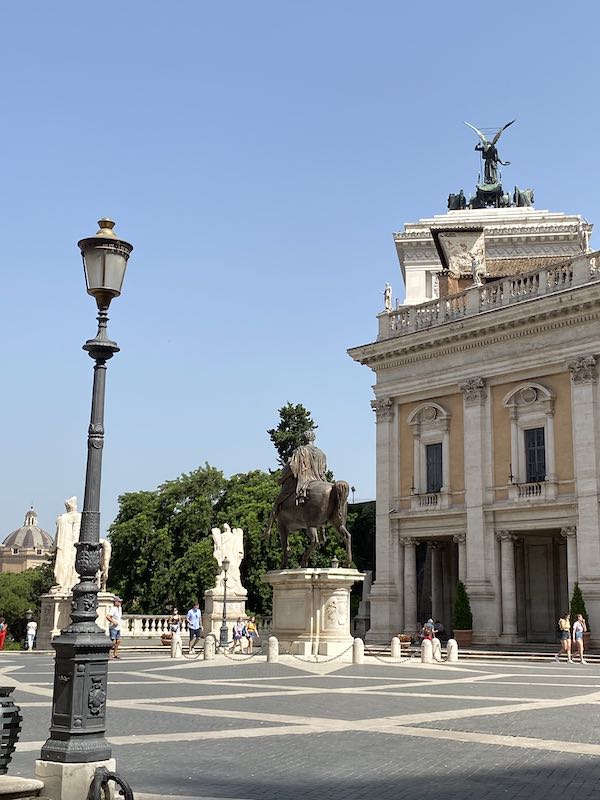
Jupiter was the God of the sky and his name seems to come from the ancient Indian word Djaus=light so that his name means Father of Light.
Gods of Day and Weather, Jovis held the destructive power of lighting but also brought beneficial rain to agricultural land and would, therefore, be a powerful symbol of the force of nature.
In the Roman world, Jovis would also overlook battles and was considered a symbol of honesty and justice since the time of the Roman Kings.
The main temple of Jovis in Rome was on the Capitoline Hill, one of the most important of the seven hills of Rome in terms of religion and temples.
Here, the Romans worshipped him under the name Iuppiter Optimus Maximus as part of the so-called ‘Capitoline Triad’.
In Greek and Roman mythology, he was represented as a muscular man married to his wife Juno. His symbols were the eagle and lighting.
Juno – celestial Roman Goddess of love and marriage
Born from Saturn and Opus, sister and wife to Jupiter, Juno is an important Roman Goddess embodying feminine powers.
She is the celestial feminine principle, just like Jupiter is the celestial masculine one.
Juno overlooks over weather events, especially the lunar phases.
She shares with Jupiter a dominant role over the other Gods and goddesses over the Roman Pantheon, of which she is essentially queen and mother.
Juno had a special connection with Roman women, who would ask for her protection at times such as marriage and birth, which the goddess overlooked.
Juno and Jovis were a celestial couple and the solidity of their relationship is considered essential for the balancing of world forces and therefore prosperity.
This explains why, despite the many stories connected to marital trouble between the two, peace between the two always ended up prevailing.
Symbols of Juno were the cown and the peacock.
The name Juno is now a very popular Roman name for girls, evocative of the feminine powers of this Goddess.
Mars – Roman God of war
Mars is the Roman God of war, representing all forces of destruction.
As such, he was one of the most important roman Gods and the embodiment of one of the two most powerful forces of the Universe: death (the other one being love).
Mars was represented as a strong male figure and has special significance in the history or Rome: via his union with Rhea Silvia, he gave birth to Romulus, founder of Rome, and Remus his brother, a Roman legend that connects the birth of the city directly with this powerful God.
Need to know: Mars wasn’t always the God of war. In ancient times, before Rome became a military power, Mars was an agricultural God, overlooking the arrival of spring and the victory of life forces over the dire winter. As such, he was worshipped as a god of agricultural prosperity and fertility
Venus – Roman Goddess of love and beauty
Venus is the Roman goddess of Love and the equivalent to the Greek goddess Aphrodite, goddess of love and beauty.
Venus is a goddess with paramount importance in roman mythology and specifically for the roman empire.
The legend as narrated by Virgil tells us that Aeneas, son of Venus and Anchises, left Troy and settled in Rome.
His descendants settled in Latium and count Rhea Silvia, mother of Romulus.
This connection between the Rome founder and Venus had strong symbolic power as associated the birth of Rome with the generating power of love.
Venus is usually represented as a beautiful young woman, often accompanies by Cupid, represented as a chubby bay with bow and arrow. Goddess of beauty and love, Venus is a powerful symbol of all-natural forces of generation and birth.
Minerva – Roman Goddess of Knowledge
Minerva is the powerful Roman goddess of knowledge.
Roman equivalent of the Greek Goddess Athena, Minerva is the daughter of Jupiter and tradition wants her to be born already in her shiny armor from his head.
As a Roman Goddess, Minerva presided over science, arts and manual work as a goddess of knowledge in all forms although it also maintained some traits of the goddess of war that she used to have in Greek religion.
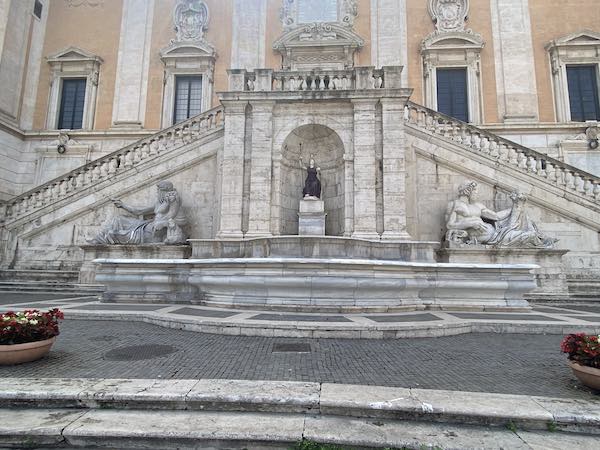
Apollo – Roman sun God
Apollo is the Roman Sun God, worshipped as Febo, son of Jupiter and Lato.
Apollo entered into the Roman Pantheon directly from the Greek religion and maintained most of his Greek character.
The God overlooks the solar and therefore the power of light and the alternating between day and night, Apollo in Rome was worshipped largely for his power of foresight, then for his healing power and finally as patron of music.
All these aspects of the God were already largely present in Greek mythology and practices in the sanctuaries of Apollo in the Greek and Roman world.
Symbols of Apollo are the lyra (musical instrument), the laurel tree and the sun chariot. The laurel was largely used as a Rome symbol of victory and success.
Emperor Augustus was devout to Apollo and had a temple to the God inside his house on the Palatine Hill.
Diana – Roman Goddess of nature and hunting
Diana is the main Roman Goddess of the lunar light. Daughter of Jupiter, she is the sister of Apollo, and somewhat his female equivalent.
Goddess of the moonlight, Diana was associated with feral life, unspoilt nature and hunting and she was usually represented as a young girl with a bow and arrows in the company of wood animals such as deer.
Her Greek equivalent was the Goddess Artemis.
Mercury – Roman God of trade and commerce
Mercury is the Roman deity overlooking trade and commerce.
He is usually associated with his Greek equivalent Hermes however, the two deities had little in common, roman Mercury being more associate with commerce than with the role of messenger of the gods.
He was often represented as a young man with winged shoes symbolizing speed.
Vulcan – Roman God of Fire
Vulcano and his Greek equivalent Aephestus was the roman god of fire, overlooking metallurgic art and therefore weaponry.
Protector of all arts and especially of metallic work, he was a positive God of workmanship and business.
Vesta – Roman Goddess of the household
Vesta is an ancient Roma Goddess overlooking the prosperity of the household and therefore the state.
Her worship dates from the very foundation of Rome and her temple used to have a central position in the Roman Forum, where it is still possible to see the house of the vestals, her priestesses.
The Vestals had the role to keep the sacred fire of the deity burning perpetually, the extinguishing of which would have brought the end of the Roman world.
Mitra – Roman God of sun and agriculture
Mitra (Mithra) is an Asian God whose cult arrived in Rome in the I century AD. Popular especially with soldiers, Mitra was a God associated with the sun, agriculture and rebirth.
In line with his mythology, he is usually represented as a young man slaying a bull, with ears of corn emerging from the animal’s blood.
Mitra was often worshipped in underground temples (mitrea) some of which we can still access. A very interesting one is at the lower levels of the Basilica of San Clemente, which is also one of the most interesting churches in Rome.
Quirinus – ancient Roman God of agriculture and war
Quirinus was an ancient deity of the Sabinian people with characteristics similar to those of the Latin Mars.
His name seems to come from that of the city of Cures whose inhabitants were called Quirites.
This ancient deity has a unique symbolic meaning in ancient Rome: legend tells us that Romulus was raised into the sky as Quirinus. The event is said to have taken place in Campus Martius, where Augustus, founder of the new Rome, later built his Mausoleum.

Lares and Penates – Roman protectors of houses and family
Lares and Penates were deities protecting the house and hte househols, the lares specificaly protectors of the house as a place and the penates protector of the livelyhood of the family members.
Virgil tells us that Aeneas, escaping Troy, brought his lares and penates to Italy to give them a new home and preserve and protect his family.
Janus – Roman God of beginnings, endings and change
Giano is a roman God without a Greek equivalent. In origin, he is the male equivalent to Diana and used to be associated with the sun and in particular with the dusk and dawn, metaphorically the beginning and the end.
The God overlooking the start and finish of everything, Janus was represented as with two faces, looking the opposite way one from the other. The month of January, the beginning of the year, is still named after him.
Giano didn’t have special temples as all doors and passageways were considered sacred to him but he did have an arch in Rome devoted to him and still visible: the arch of Janus.
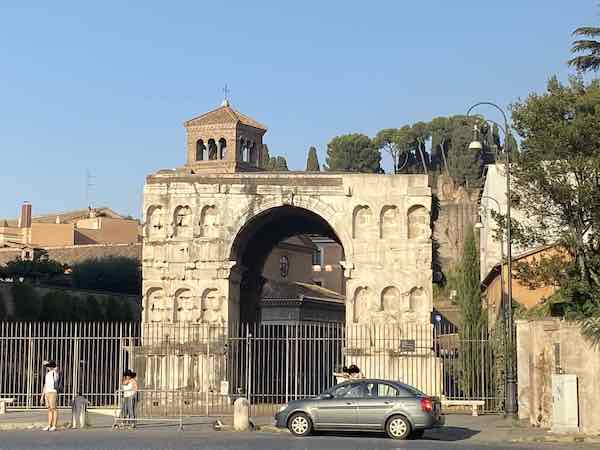
Ceres – Roman Goddess of agriculture
Ceres was the Roman equivalent to the gree Goddes Demetra and represented the productive power of the soil, agriculture and, in general prosperity.
The goddess overlooked the passing of the seasons and the alternating of winter and spring.
Her myth is strongly associated with that of her daughter Proserpina, taken by Pluto to the underworld and only given back to her mother for six months of the year.
A fantastic statue in Rome representing this myth is the famous ‘taking of Proserpina’ by Gian Lorenzo Bernini in the Borghese Gallery.
Consus – Ancient Rome God of agriculture
Consus is an Ancient Rome God of agriculture, traditionally worshipped in the Circus Maximus with races of donkeys.
Ancient sources talk about this God as one of the most ancient of the Rome Pantheon: his festivals were held in the month of August and are at the origin of the still current festivity of Ferrragosto.
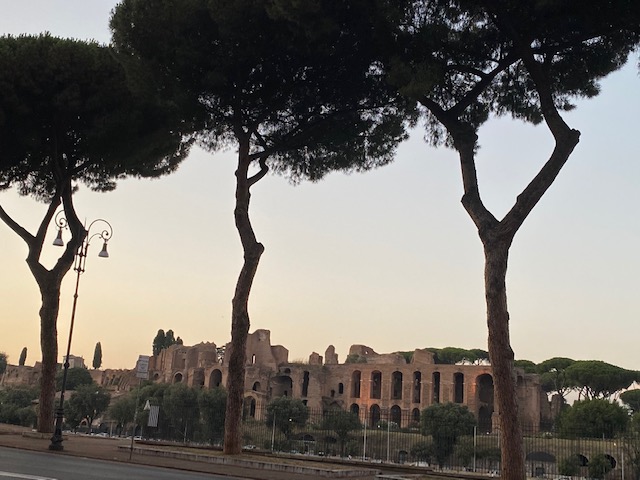
Pluto – Roman god of the underworld and of abundance
Pluto is the God of the underworld, the main God of death, equivalent in power to Jupiter and Neptune.
Son of Chronos and Rea, he wasn’t often represented in ancient times and we have few descriptions of him, despite numerous mentions by several poets and dominant role in what the tomans images to be the underworld.
His most powerful representation is by a baroque artist, Bernini, who represented him as a strong man accompanies by the three-headed dog Cerberus, in the moment of the taking of Proserpina, one of the most powerful myths associated with this god.
This is one of the most famous sculptures in Rome and it is now kept in the Borghese Gallery.
Neptune – Roman God of the sea
Neptune is the Roman God of the sea, supreme rules of the world of water just like Jupiter of the Sky and Pluto of the underworld.
Often represented with running horses, representing the power of the sea, he was also the Gods of horses.
Saturn – Roman God of agriculture
Ancient Roman god of the act of sowing and, therefore, of agriculture. His main festival was called Saturnalia and happened between 17-19 December.
Isis – Rome Goddess from Egypt
Isis is a female Goddess from Egypt with many followers in Ancient Rome.
While not part of the original Rome Pantheon, the worshipping of Isis started in Rome in the I century BC, when Egypt became Roman province, and grew ever since.
Remains of the temple of Isis in Rome are still visible in the city (via Labicana) in and we have at least one large statue of Isis dating from Roman times, which you can see in Piazza San Marco (Piazza Venezia).
Fun fact! This large statue of Isis is one of the six talking statues of Rome: Madama Lucrezia!
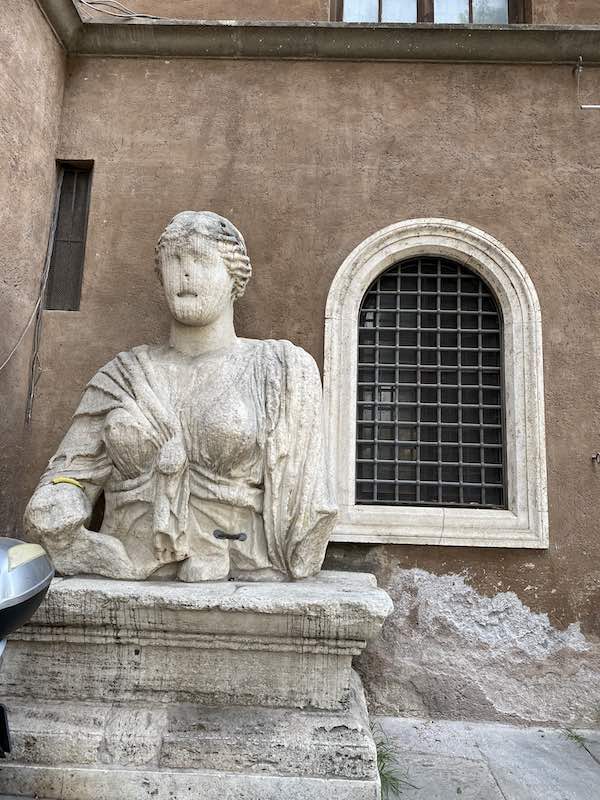
Other important Roman gods and goddesses
- Sol – Roman God of the solar disk
- Luna – Roma Goddess of the moon
- Aurora – Roman Goddess of dusk
- Oceanus – God of the sea
- The Muses, 9 Greek/Roman deities overlooking the arts
- The three Graces, representing all that is beauty and grace
- Juventus, the Greek Goddess Hebe, Roman symbol of youth
- Aesculapius, God of medicine and health, whose work is represented by a snake around a rod, shedding his skin (symbol of renewal)
- Cibeles – originally arrived in Rome from Crete and Asia Minor, she represented mountain life and the generating power of soil and nature
- Bacchus – God of wine and horticulture, often represented with grapes and vines, in the company of Satyres
Roman Gods vs Greek Gods: Roman deities and their Greek equivalent
Many Roman Gods entered the Rome Pantheon from Greek religion and mythology. In some case, they maintained their original characteristics, while in others, they mixed their Greek traits with those of ancient Italic deities.
In both scenarios, it is possible to draw parallels between Roman and Greek Gods and Goddesses. This is a list of the main Roman Gods and Goddesses and their Greek equivalent.
It includes the 12 Greek Olympian Gods and Goddesses and other deities significant in Roman Religion
| Roman God/Goddess name | Equivalent Greek God/Goddess |
| Jupiter | Zeus |
| Juno | Hera |
| Venus | Aphrodite |
| Mars | Ares |
| Minerva | Athena |
| Apollo | Apollo |
| Pluto | Ade |
| Ceres | Demetra |
| Neptune | Poseidon |
| Diana | Artemis |
| Mercury | Hermes |
| Bacchus | Dionysos |
| Asclepius | Aesculapius |
I hope you enjoyed this overview of the most important Roman gods and Goddesses and their symbols. Happy studying.
Sources:
I am a classics graduate for the University of Rome, with a degree in Roman History and, specifically, the relation between paganism and early Christianity. Sources for this articles are my studies and some of my favorite books about Roman religion and mythology (below).
These the ancient author Ovid and other ancient writers, who are a first hand source of information.
- Ovid’s Metamorphosis (I century AD)
- Felice Ramorino ‘Classical Mythology, Hoepli Milan
- Lana and Fellin: Latin Literature Anthology
Gods and Goddesses of Rome: pin this!
